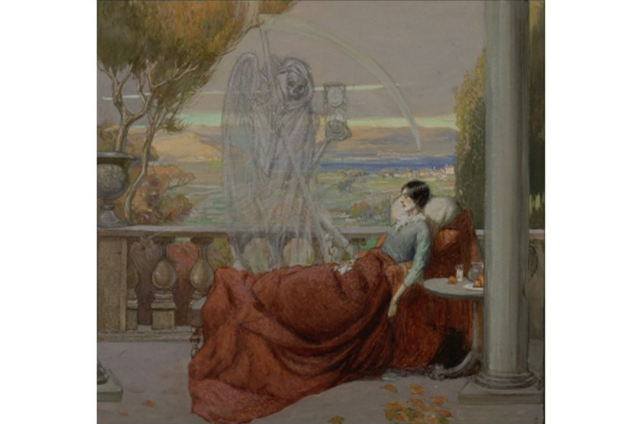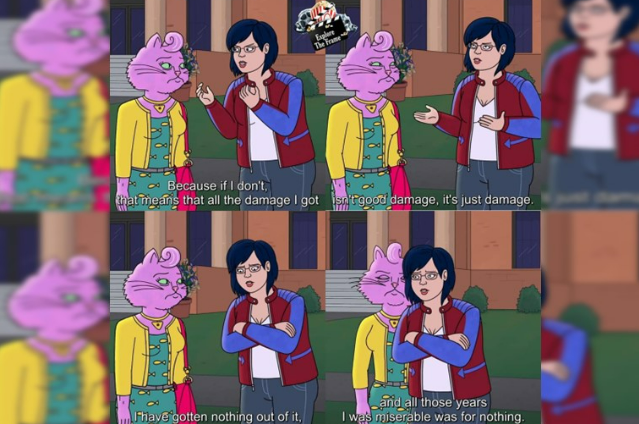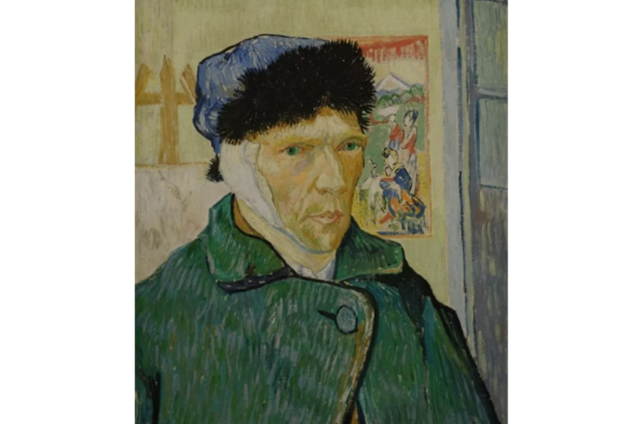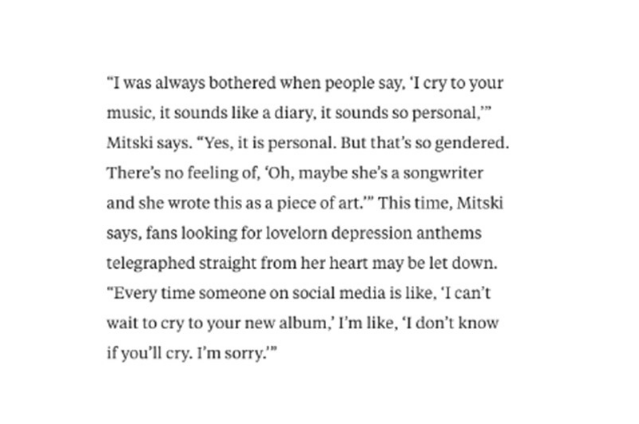
“There is a certain clinical satisfaction in seeing just how bad things can get.” - The unabridged journals of Sylvia Plath
In recent years, there has been a massive rise in attempts to destigmatize mental illness in society, which, in a twist of perception, has led to it being sensationalised. The influence of popular culture has made it a trend to romanticise mental illness amongst the younger generation. It happens for a variety of reasons, but the younger generation is more prone to be affected by the media depiction of psychological disorders, largely because that demographic is still in the process of figuring out their identity and constructing their ideals for themselves and the world.
Naturally, exposure to social media and the internet because of its interactive features will shape and influence their opinions, as these are some of our main sources of information and entertainment. The consequences of admiring mental illness can range from using disorders such as depression, anxiety, eating disorders, phobias, etc as assistance to make one’s personality more interesting, or ‘mysterious’ to more consequential, such as not seeking help in fear of being suspected of faking mental illness for attention.
Although the act of removing disgrace and shame from being associated with mental illness is a fairly recent phenomenon, glamourising it isn’t so. Which is why, to fully understand why depiction of such disorders is highly influential and swaying, we first need to understand the history of it.
THE HISTORY OF IDOLISING ILLNESS
In social history, popular culture has always glorified illness. Although the mediums might be different due to the difference in age and technology, the sentiment is the same. The most suitable example would be the adoration of Tuberculosis in the 19th century, due to the complexity mixed with the lack of medical knowledge about the disease, which ironically, gave it a sense of mystique to be desired.
Common symptoms of tuberculosis included fevers, sweating, weight loss, fatigue and the most recognizable - chronic coughing. Weight loss and the phenomenon of the body being ‘wasted’ associated with the disease gave it a very popular nickname of “Consumption” (consuming the entirety of an individual).
The dire and extreme effects of Tuberculosis in that age was undeniable , with millions of people dying due to the resulting aftermath. Despite the damage it had caused society, depictions of Tuberculosis in the late 19th century somehow became synonymous with the idea of beauty and tragic romance. Those suffering from it were seen with a morbid loveliness, even considered stylish.
Numerous artistic figures popular at the time helped shape the public perception of the disease through writing and art, so much so that the general consensus became that contracting TB had catapulted their creativity and elevated their sense of mind.

Ghost representing tuberculosis in front of a scenic view
source: Wellcome collection
Writers like John Keats, George Orwell and the Bronte sisters were all claimed by TB, contributing to the idea that dying of Tuberculosis meant having a ‘romantic demise’. Poet Lord Byron even wished to die of consumption, going on to say “How pale I look! I should like, I think, to die of Consumption. Because the ladies would all say ‘Look at the poor Byron, how interesting he looks in dying!’” which funnily enough, summarized the entire idea that people wanted to suffer from the disease, so they could be considered mysterious, beautiful and be associated with heightened sexual allure.
But as medical advancement happened and knowledge reached the common folk, Tuberculosis became less of an issue and even lesser focus of wonder. Without the air of mystery surrounding an illness, the charm is lost. As physical illnesses began being approached scientifically instead of superstitiously, the romanticization of it stopped.
But recently, the same phenomenon has been rising all over again. Except this time, the focus is on glorifying mental illnesses instead of physical, since the diseases of the mind are more of a mystery than Tuberculosis ever was, and a lot of its symptoms are complex and don’t manifest physically.
SEARCH FOR MEANING IN SUFFERING
We are often told that being sad and suffering through that sadness is an inevitable part of life. And despite the truth in the statement, we as human beings need to find a deeper meaning for the things that we feel to justify our human existence. This is shown through numerous philosophical dissections, but we connect to the sentiment on a personal and collective level so that we can stand out and feel special as an individual.
The concept of surviving suffering has been memeified, but the truth in the jokes still pertain. On how the only way to survive mundanity is by romanticising it.
“The world into which we are born is brutal and cruel, and at the same time one of divine beauty” says Carl Jung, a psychiatrist and psychoanalyst.
Friedrich Nietzsche, a German philosopher and philologist says in his book “On the Genealogy of Morality” that the idea of punishment is based on a contractual relationship that states : Every injury had some Equivalent and the idea that being hurt can be compensated by returning the debt, and hurting the inflictor. Instead of material goods and money, people were compensated through satisfaction of imposing suffering on others. But when humanity entered civilised society, it was necessary for people to get rid of the idea of an eye for an eye, in order to establish an ethical and peaceful existence.
Nietzsche claims this is where we developed the moral concept of guilt. Since inflicting cruelty on others became immoral, people couldn’t openly express or feel satisfied through those instincts. Since this was a drastic change, these feelings of suffering and punishment were internalized by humanity, now directed towards our own selves. Nietzche terms this phenomenon as ‘The Internalization of Man’ saying all the feelings and instincts we cannot discharge to the outside, they turn inward and cause harm to the psyche.
This causes ourselves to suffer, through self-sacrifice or self-denial. Enjoyment from punishing others was redirected to enjoyment of punishing ourselves, so we could be guilt free.

Like I said, since suffering through sadness is an inevitable part of life, then to purposefully make yourself suffer gives a sense of control over your pain. And we attach ethical value to feeling guilty and accountable, depriving ourselves of pleasure so at least feeling shameful and being in anguish because of it will give us something in return - it will make us a good person.Then, we aren’t hurting for nothing. There is meaning to the pain.
“We can only love with suffering and through suffering. We cannot love otherwise, and we know of no other sort of love. I want suffering in order to love.” - Fyodor Dostoevsky.
THE 'TORTURED ARTIST' TROPE
The tortured artist trope refers to the idea that creative geniuses always live in a state of constant torment and sadness because of frustration in how they view the world. However, it is this torment that enhances their art and increases their creativity, providing them timeless ideas to work off of.
According to this myth, achieving something great requires suffering and pain. From Plato saying "All of the good poets are not in their right mind when they make their beautiful songs" in Divine Madness to Edvard Munch, the painter of The Scream saying "Art comes from joy and pain - but mostly from pain", this idea that creation requires misery is not only extensively damaging, but completely false.
Then, why is it such a widely held belief that is viewed through the lens of morbid fascination?
Simple, because some of the most influential and popular artists in history endured mental illnesses, and their work drew inspiration from their own experiences. Since these works were are some of the greatest classic works of our generation, the idea of the tortured artist became a cenrtrepiece for discussion at every dining table.
Vincent Van Gogh - Perhaps the most famous personality to be associated with the idea, his artworks were an attempt to make sense of his suffering and brilliance. Van Gogh suffered through psychotic episodes, was a sectioned patient who lived through asylums, and was possibly schizophrenic. His paintings are seen as a projection of his inner turmoil. Even to people with no interest in art, he is a household name deserving respect. Yet, Vincent Van Gogh sold only one piece of art before his suicide.

Vincent Van Gogh, self-portrait with bandaged ear
Source: Wikipedia
Sylvia Plath - Popularly quoted writer, Sylvia Plath was a gifted writer and poet. She suffered through long periods of hopelessness and self-doubt, yet her writing was made up of beautiful and vivid imagery. Her identity as an artist and a person sometimes blended, giving us some of the richest insights to her mind, described as "deeply troubled" through her writing. Plath committed suicide, one month after the publishing of her novel "The Bell Jar" that was an autobiographical record of her trouble with depression.
Beethoven - Looking at the span of Beethoven, a musical prodigy's life, the emotional development of the composer that in return produced his creative output, is greatly marked by darkness and misery. While his life may have been flooded with striking sadness, Beethoven appears to have successfully converted his negative emotions into his music.
All the artists mentioned above created different forms of art, ranging from visual art to literary art to musical compositions. These artists weren't just portraying an aesthetic sadness in their works, it was their way to deal with the inward fears and doubts that arose in their minds. It wasn't just a pretty swirl of a deep green paint brush, these were life-altering and in some cases, life ending problems that were damaging and dangerous.
Yet, the idea of the tortured artist implies that this misery is the roadway to artistic genius. Creatives are told that pain serves a purpose, that it carries a more profound meaning that they need to channel into their creation.
And perhaps it does, pain is meant to make you grow. To understand that failures are inevitable, therefore moving on and growing apart from them is your best course of action. You don't have to suffer to be perceived as a more complex being, you don't have to punish yourself to be remembered as a great artist.
All keeping yourself in agony will do is create unhealthy coping mechanisms. Art is meant to celebrate creativity afterall, not suffering.
WHY DO WE SEEK SAD ART?
Any artistic medium begs for an audience? And often, feelings of sadness portrayed through an art form are immediately equated with depth. The most prevalent example of this phenomenon, although different from its intended meaning, would be the running joke of "Why are the curtains blue?"
The question is supposed to be a contraction between what the author intended to represent vs what the audience understood the meaning as. And the curtains are blue, a colour often associated with emotions of melancholy, sadness, suspicion, depression and unreliability - so of course it has a more 'profound' meaning beyond it.
Afterall, suffering has a weird way of convincing us it is more honest than any other emotion.
It manifests in various forms of media, from film to music to paintings. Artists like Mitski, Billie Eilish, Lana Del Rey - people often stereotypically associated with making sad music are some of the most celebrated musicians of the recent years.

Mitski in an interview titled "don't cry for Mitski"
Source: Pitchfork
There are several reasons why people are attached to consuming sad art. Some of them are-:
- Self-Verification - Studies show that people suffering from depression feel like they have to constantly chase sadness in an attempt to be rooted to the identity they are most familiar with; one that of suffering and pain. Their consumption of sad media is motivated by a feeling of self verification, which helps them remain in a state of negative emotions, which they are accustomed to.
- Understanding - Consuming sad media is different from real life experiences with tragedy. When we know something is fictional, or an experience that although reverberates with us, isn't actually our own, it creates a feeling of sadness. It does not, however, create anxiety that happens when faced with destruction in reality.
We consume these films or music from a distance, therefore the negative emotions depicted in works of art have a powerful impact on us because of securing our attention. The understanding is what makes negative art memorable, and in cases of relatability, it gives us a sense of representation, and thus makes it familiar.
- Hedonic - Art is a safe space for us to explore our feelings and embrace our negative emotions without any real life consequences. We live our own feelings through these experiences of sadness depicted in works of art. Whether it is from how beautiful the depressing music sounds, or if it is personally calming, many people consume sad art because it makes them feel good and comforts them. In a way, minimises their pain in reality and maximises the pleasure in fiction.
THE AFTERMATH OF ROMANTICIZING SADNESS
Nietzsche says "Profound suffering makes noble, it seperates." When we are continuously told that sadness makes us interesting, that suffering makes us more complex - it is only natural for people who are still developing their perspectives on things to stand out from the masses, to say "I am different" and making suffering a competition.
I have seen in my peers that despite whether their feelings of ache are real or not, most of us don't want them to change. As high schoolers, we did not want to grow out of our sadness. On the contrary, we constantly tried to reaffirm it. We truly believed that the more we suffered, the more sincere our self expression was.
Of course, the blame is not on artists who put out content highlighting sadness, there is an undeniable need for representation of it. But a lot of it, from movies (Split, 2016) being offensive misinterpretations of mental illness to the public portraying tragedy as something romantic, something poetic (the infamous Van Gogh cuts off his ear incident), how is the younger generation not supposed to feel there is a sense of beauty attached to these disorders.
"The pain of not having enough pain is still pain, young man." - Community
Advocating for a better understanding of mental illnesses was a phenomenon picked up by the media, and in the process of trying to destigmatize it, the theme turned into one of entertainment and trying to keep people "hooked" leading to irreversible damage of gorifying tragedy (13 Reasons Why).
Many teenagers and young adults now see mental disorders as relatable or desirable, while people diagnosed with them would tell you it is nothing poetic or aesthetically presentable. The media and the internet culture needs to be held accountable for representing mental illness as something of 'tragic beauty'.
The bridge between representation and romanticization is a narrow one - mental illness is not a goal, but a treatable condition, and people who need help should know that help is available for them. Striving to achieve an 'aesthetic' of tragedy won't give you an identity of profoundness. Pain is not poetic, it's just pain.
"You do not have to be good. You do not have to walk on your knees for a hundred miles through the desert repenting.You only have to let the soft animal of your bodylove what it loves." - Mary Oliver
